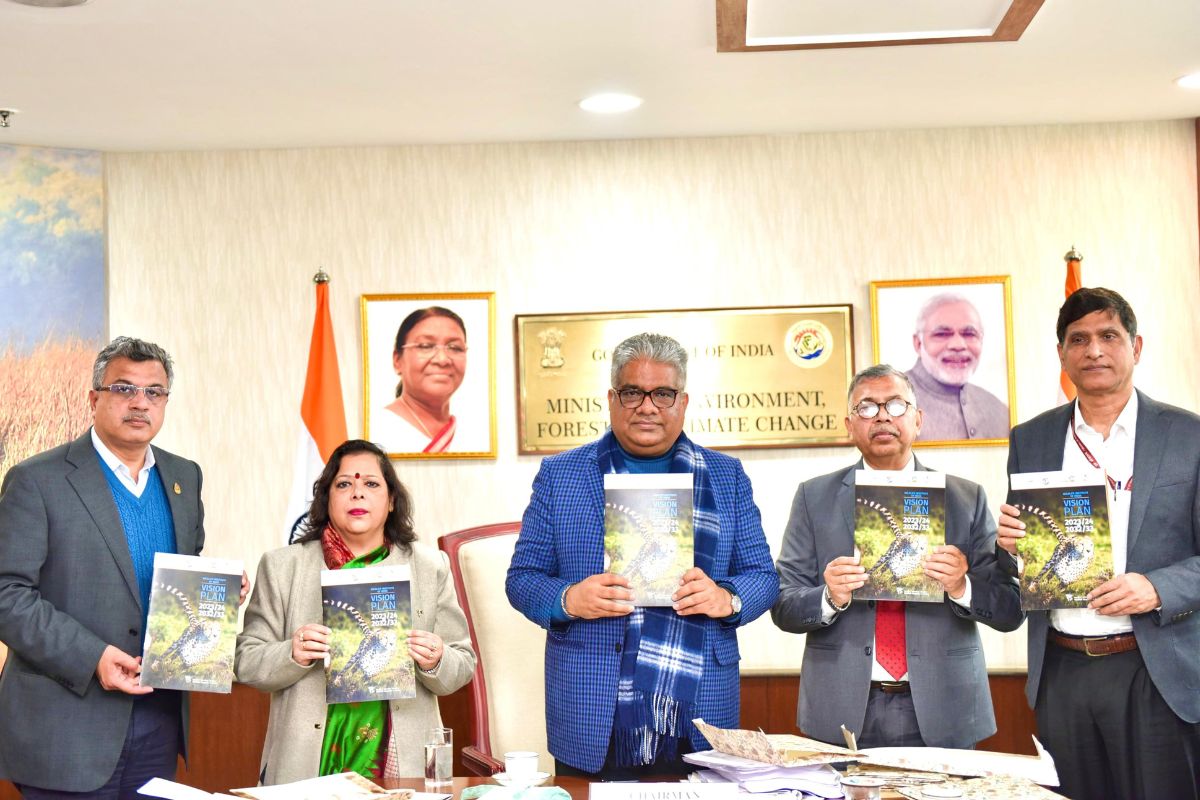Union minister Bhupender Yadav on Tuesday released a status report on snow leopards in India in a first-such scientific exercise, with the country now having a total of 718 such leopards.
Releasing the report during the National Board for Wildlife meeting held here, he said the Snow Leopard Population Assessment in India (SPAI) programme is the first-ever scientific exercise in the country.
The Wildlife Institute of India (WII) is the national coordinator for this exercise that was carried out with the support of the Nature Conservation Foundation, Mysuru and WWF-India.
“The SPAI systematically covered over 70 per cent of the potential snow leopard range in the country, involving forest and wildlife staff, researchers, and volunteers. Covering approximately 1,20,000 km across the trans-Himalayan region, including Ladakh and Jammu and Kashmir, Himachal Pradesh, Uttarakhand, Sikkim, and Arunachal Pradesh, the exercise was conducted from 2019 to 2023 using a meticulous two-step framework,” an official release stated.
The first step involved evaluating snow leopard spatial distribution, incorporating habitat covariates into the analysis, aligning with the guidelines of the national population assessment of snow leopards in India by the Ministry of Environment, Forest and Climate Change (MoEFCC) in 2019. In the second step, snow leopard abundance was estimated using camera traps in each identified stratified region.
“A total of 241 unique snow leopards were photographed. Based on data analysis, the estimated population in different states are as follows: Ladakh (477), Uttarakhand (124), Himachal Pradesh (51), Arunachal Pradesh (36), Sikkim (21), and Jammu and Kashmir (9),” it said.
Until recent years, the snow leopard range in India was undefined due to a lack of extensive nationwide assessments for this vulnerable species. Before 2016, approximately one-third of the range received minimal research attention, reduced to just 5 per cent in pockets like Ladakh, Jammu and Kashmir, Uttarakhand, and Himachal Pradesh.
The report also underlined the need for establishing a dedicated snow leopard cell at WII under MoEFCC with a primary focus on long-term population monitoring, supported by well-structured study designs and consistent field surveys.
Yadav said consistent monitoring is essential to ensuring snow leopards’ long-term survival. “For the same, states and UTs can consider adopting a periodic population estimation approach (every fourth year) in the snow leopard range. These regular assessments will offer valuable insights for identifying challenges, addressing threats, and formulating effective conservation strategies,” the minister added.












